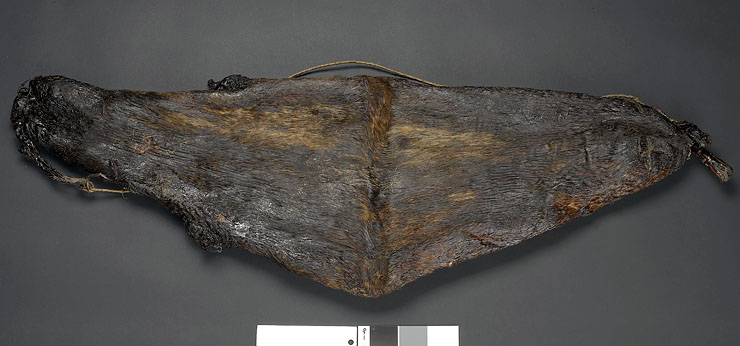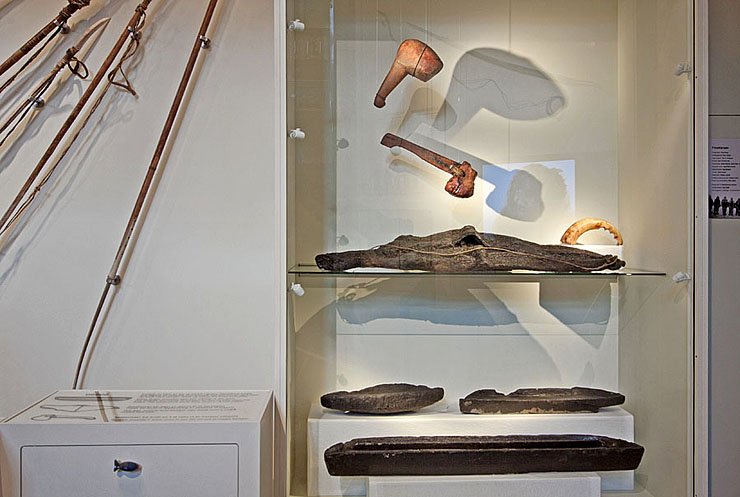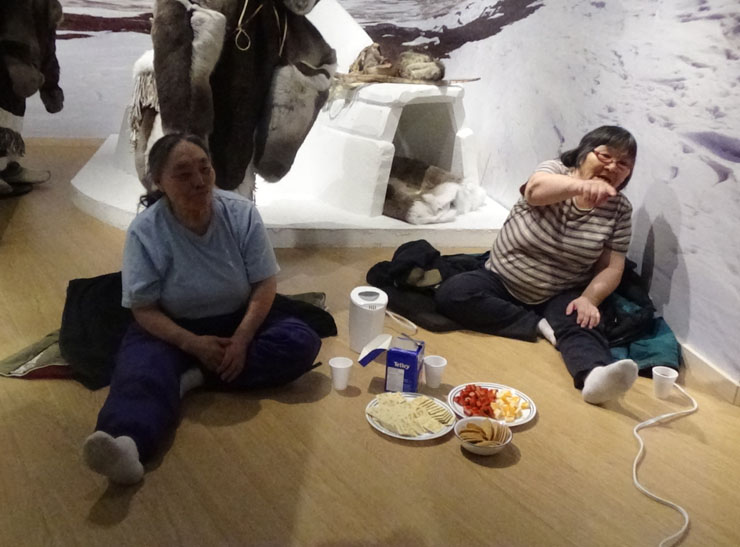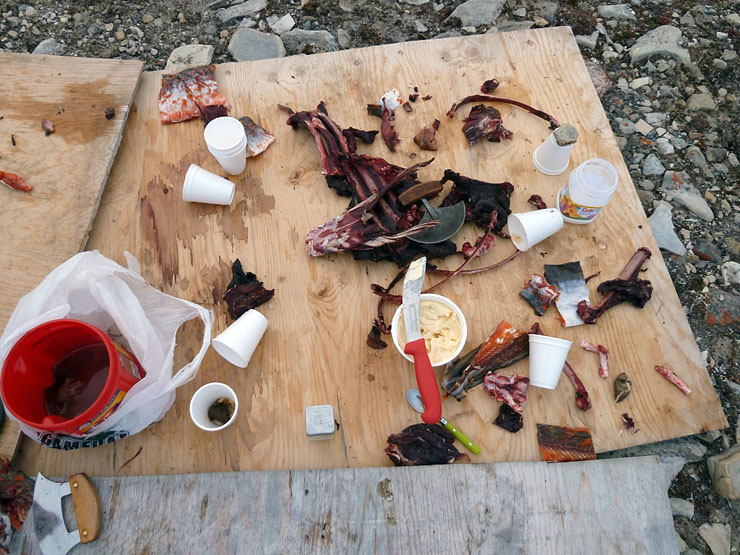
Roald Amundsen’s collection of objects from his stay in Gjoa Haven during his North West Passage expedition is exceptional. It is rich, inclusive – and not least, it is well documented. The 1907 catalogue describes each object, and in Amundsen’s books about the expedition, published in the same year, he also writes about the Inuit he made friends with and their way of life. The museum catalogue gives the following description of the blubber bag:
"16107 Blubber bag, made of a raw sealskin, with an opening along the stomach. Between the back flippers is fastened a bone for hanging up the bag. At the head end is bound a thong which serves the same purpose. Length. 1 m. King William Land. (Accessions catalogue 1907)"
Amundsen goes on to describe how the bag was used for storing fuel. Seal blubber packed into such bags was burned in the stone lamps, the only source of light and heat in the igloo during the winter (Amundsen 1908II:8). In the Arctic Experts exhibition, we placed the blubber bag with lamps and clubs for beating and softening the blubber.

But we would love to know more – just imagine if we could travel back in time and talk to the people Amundsen bought the bag from… So far the lack of technology has foiled us in this respect. What we have done, however, is discuss objects from the collection with contemporary experts in Gjoa Haven.
But we would love to know more – just imagine if we could travel back in time and talk to the people Amundsen bought the bag from… So far the lack of technology has foiled us in this respect. What we have done, however, is discuss objects from the collection with contemporary experts in Gjoa Haven.
The blubber bag was the topic during a public event at the Nattilik Heritage Centre in Gjoa Haven at the end of April last year. Martha Atkichok and Ruth Qirqut, the two Elders telling stories and sharing knowledge that evening, had a lot to say about the bag. People in Gjoa Haven mostly moved to town and into houses in the 1960s and early 1970s, so life in an igloo is familiar to these women.

After talking about skinning the seal and preparing the skin to make sure the bag would not leak, Martha and Ruth went on to talk about how it was used. They agreed that the bag was made to hold seal blubber. When I put forward Amundsen’s explanation that the blubber in the bag would be used as fuel, however, those present wrinkled their noses.
I was told that, of course, blubber from the bag could always be used in the lamp, but my goodness, it would really stink when it was burning. The point of keeping blubber in a bag like this was to make igunaq, aged seal fat. This is a delicacy that is meant to be eaten, not burned. And because of the greasiness and the smell, the bag is usually only used once. It is better to make a new bag when you need it.
Lorraine Puqiqnak and I talked more about the blubber bag the next day. Like many here, her eyes get shiny when she speaks about igunaq. Aged seal fat is still regarded as a delicacy:
"Nowadays we make igunaq in a container. I put it outside in the shade, or in our cabin, dig it a bit down into the ground, like a ditch, and try cover it with a caribou skin on top. If it’s too hot it will spoil, so outside in the shade is good. You put flippers, as many flippers as you can find, with the blubber and leave it for the summer. When the fur comes off the flippers it’s ready to eat – maybe after a month or more – and its soo gooood. So good food."

After the meeting with the women in Gjoa Haven, the blubber bag in the museum’s collection takes on new dimensions. It can no longer be interpreted simply as a container for fuel. The greasiness and smell are linked to a very popular local delicacy that people still make, eat and share with each other. The idea of an object that is used again and again because people in the old days had very little, and looked after what they had, must be replaced by a more practical view. The igunaq and the process of making it is so messy that the bag is not suitable for reuse. The same is true of the containers used today; it is better to find a new one next time blubber and flippers are to be put outside to ferment.
Next time the blubber bag is going on display in Oslo, it will perhaps be as an example of disposable packaging for snacks and goodies. We might display it with other wrappers and containers, maybe with other foods. We could let our visitors try a taste of igunaq too.
If we are lucky, we might persuade some of the Gjoa Haven ladies to come and teach us how to make some.
References
Amundsen, Roald 1908 "The North West Passage" being the record of a voyage of exploration of the ship "Gjoa" 1903-1907 by Roald Amundsen with a supplement by first lieutenant Hansen, vice-commander of the expedition Vol. I and II New York: E.P. Button and company
Museum of Cultural History, accessions catalogue Ethnographic collection 1907 15540-16246 is the Netsilik Eskimo collection brought home by Captain Roald Amundsen in November 1906 from the Gjøa-Expedition.
Taylor, J. Garth 1974 Netsilik Eskimo material culture: the Roald Amundsen Collection from King William Island Universitetsforlaget, Oslo